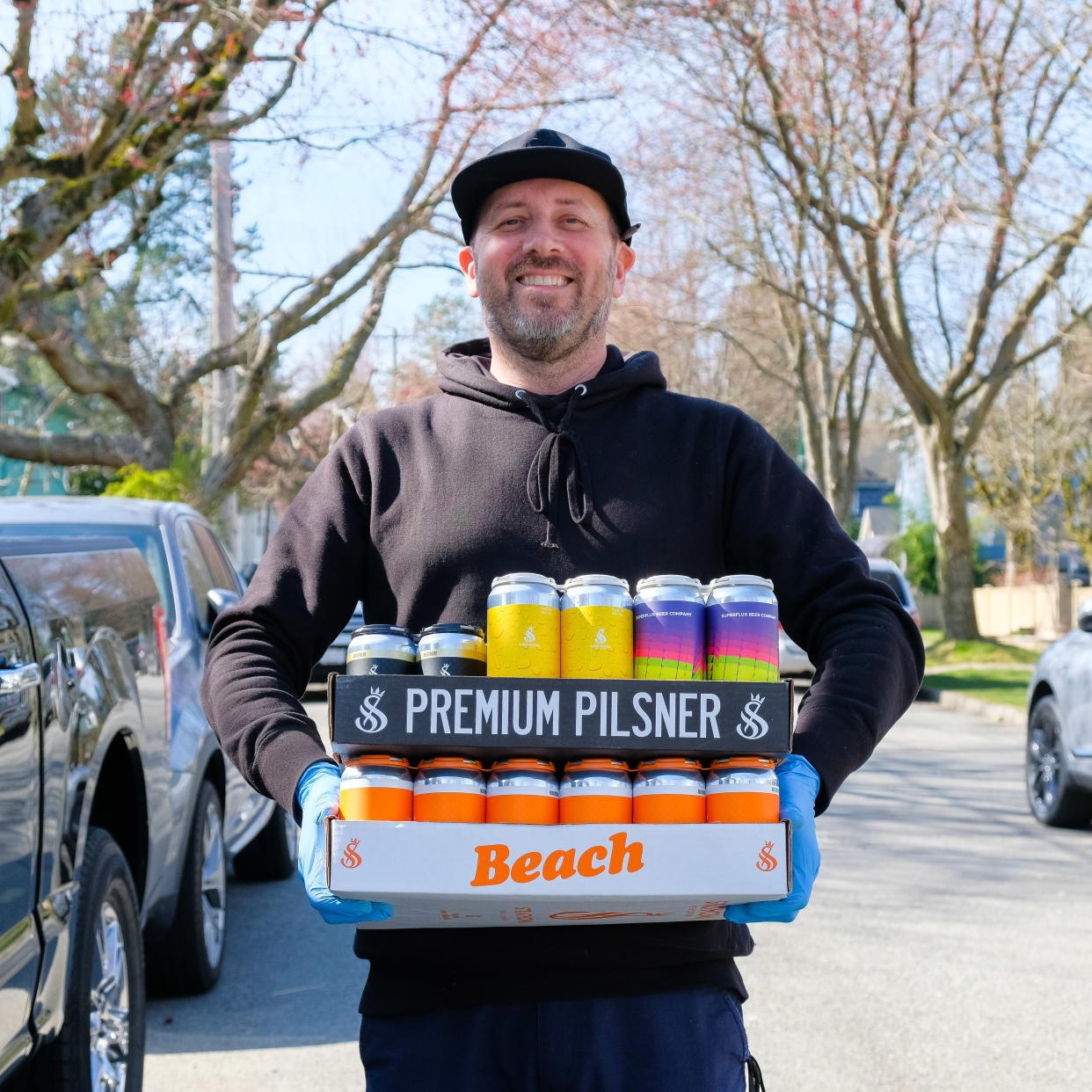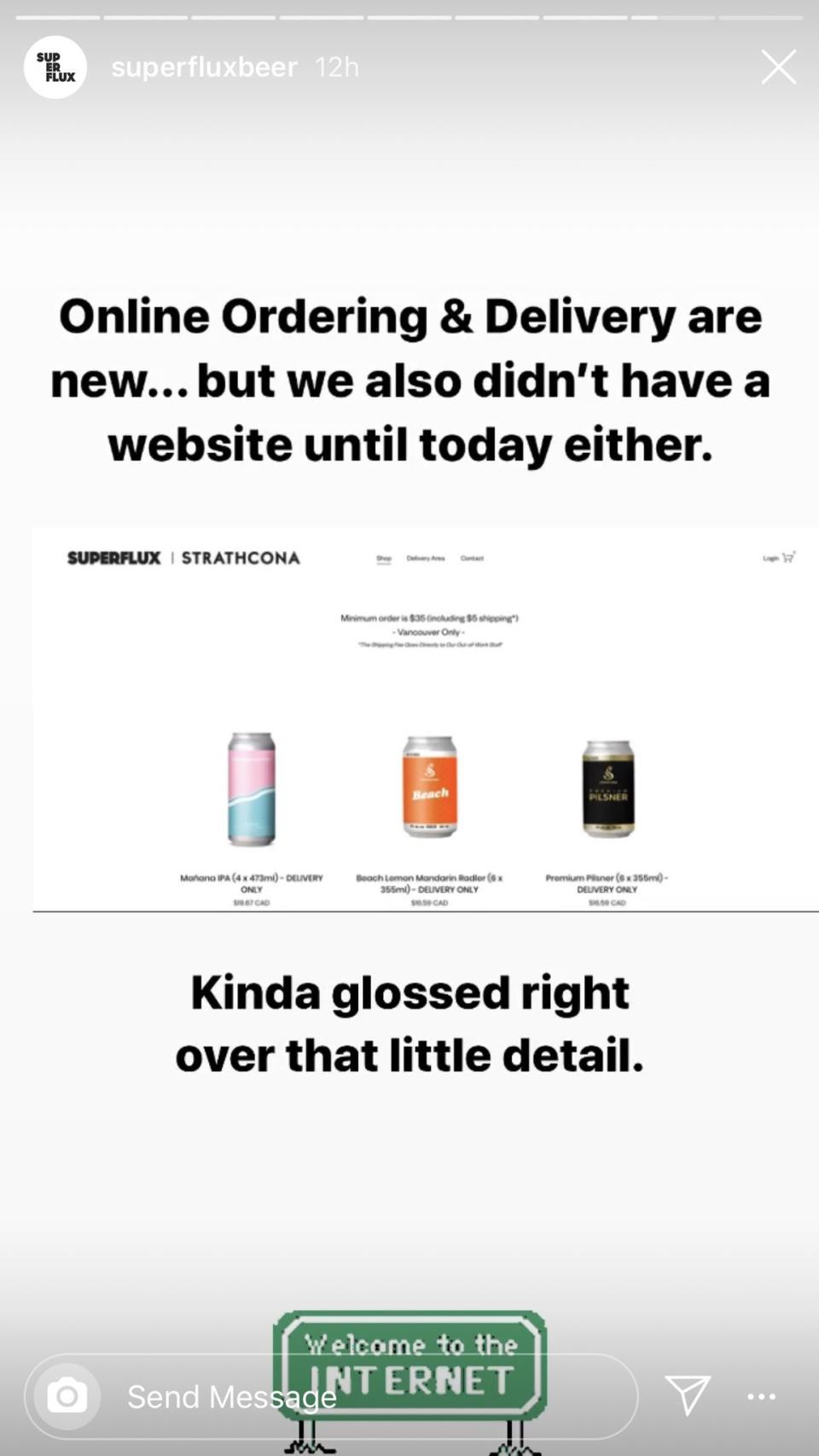Small businesses in survival mode turn to e-commerce as coronavirus spreads

As more provinces enact emergency measures to prevent the spread of COVID-19, many businesses are building e-commerce services to remain viable. Experts say the move will be challenging for some and not all will continue the service after the country lifts measures.
On March 18, Adam Henderson, a co-owner of Superflux Beer Company in Vancouver, turned the green light on for its website and online store for the first time.
“It all came Tuesday morning, really. We saw the hospitality service industry was getting crushed. All of our customers own restaurants. With Vancouver, they pretty much all shut down. For us, that was basically an overnight loss of about half of our business,” Henderson said in a phone interview.
“For us, it was survival.”
The company has decided to donate the money it raises from delivery fees to the Strathcona Beer Company’s staff in solidarity after the brewer shut its in-house dining services. Henderson noted that Superflux brews under licence at Strathcona Beer Company, using that company’s facilities for brewing.
“It may sound alarmist, but I think that there’s a really good chance that your favourite restaurant is not open when this is over. And I think that is really, really sad. And it’s just a reality, a lot of people don’t have the money to keep their businesses going,” Henderson said, adding that the response his company has gotten from customers has been overwhelmingly positive and comforting.

Managing e-commerce can be challenging for small business
Corinne Pohlmann, senior vice-president of national affairs and partnerships at the Canadian Federation of Independent Businesses, said many companies already have an online presence, but will now have to navigate the e-commerce space, which will be challenging for many.
“It’s expensive. There are a lot of easier ways to [create an online store] today than there was five years ago... It’s the costs of it which are high. It’s also the distribution costs, which all add up,” she said. “The situation we are finding ourselves in today is probably going to encourage some of those [businesses] to look at other options.”
To help customers trying to create an online presence, Shopify announced a US$200 million fund for small businesses. It also announced last week it will extend its platform trial period from 14 days to 90 days, and offer live webinars to help customers navigate the new space.
Pohlmann said that if a business finds its online e-commerce platform is successful, there is a possibility that they will continue once the pandemic passes.
“It’s another line of business that they’ve now been able to figure out how to manage appropriately,” she said. “It could potentially transition some people who were previously not really interested in… expanding their channels for which they can sell their products. It will be interesting to see how many do make that flip and how many feel that it’s something they won’t keep doing.”
Maintaining existing customer relationship might help if e-commerce site is opened
Michael LeBlanc, a senior retail advisor with the Retail Council of Canada, said in an interview that going online is easy, but it might not be the best move for many small businesses that rely on face-to-face interactions.
“The relationship with customers can be hard to replicate online for really conventional products,” he said. “You can launch an online store and have an online presence, but how are you going to get found?”
According to a March 17 CFIB survey, 42 per cent of small businesses said they would have zero sales if face-to-face contact becomes impossible.
But LeBlanc said that for small businesses that do rely on customer relationships, going online now will help them maintain that relationship.
“They can go online and stay connected to their community in a meaningful way and the community will support and want to support independent retailers,” he said.
LeBlanc said he doesn’t expect all companies that are turning to e-commerce to maintain their sites once the ban is lifted.
He said if there were 10 online businesses before, now there may be 80 and once things get back to normal the number of online stores might drop down to 20 or 30.
Mark Satov, president and founder of Satov Consultants, said that post-pandemic, shops that remain online will be “category dependent,” noting that customers during this period will realize what they like to shop for online and what they don’t.
“I think afterward we will see a change in slope and the online adoption curve for some categories because some people never realized that there are online options that are easier,” he said. “They’re going to realize that online shopping is easier and in some cases cheaper. But some of what goes online will not come back.”
For Henderson, who said there is a possibility of maintaining Superflux’s website and online shop after the lockdown, the biggest challenge has been distribution.
As of now, the company is delivering only to specific postal codes in Vancouver.
“It’s challenging because people are everywhere and our delivery guys don’t know all the addresses,” he said. “That was a big change for them.”
Without doing much social media advertising other than Instagram posts, Henderson said they received 50 orders each day.
“I would say that’s pretty good. It hasn’t overwhelmed us and the support has been unexpected, we are really happy with that,” he said.
Download the Yahoo Finance app, available for Apple and Android and sign up for the Yahoo Finance Canada Weekly Brief.

